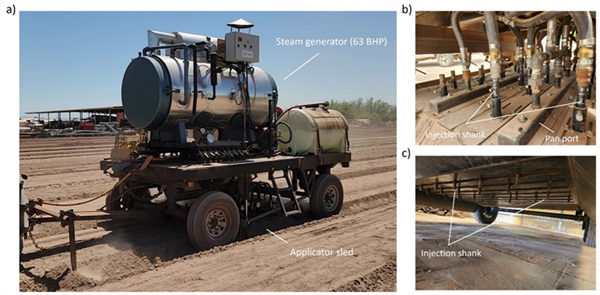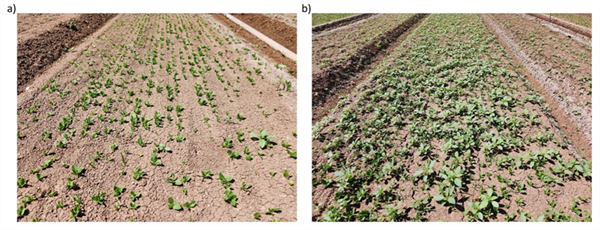
On Tuesday, 15 August 2023 officials from the U.S. Bureau of Reclamation (USBR) presented their 24-Month study reports with projections and operational plans for 2024 (USBR, 15 August 2023). We are still dealing with the drought but there is some improvement in the 2024 plans for Colorado River water allocations for Arizona.
The wet winter and spring experienced in the Southwest in 2023 has provided some relief on the dire situation we were facing on the Colorado River system and reservoir levels have improved. But unfortunately, one good precipitation season does not solve all the problems and they will still need to be dealt with.
The current plan for lower Colorado River water management is basically a return to the Drought Contingency Plan (DCP) Tier 1 schedule (Figure 1).

Fgure 1. Drought Contingency Plan Tier reductions for Arizona.
Tier 1 plans take us back to an 18% reduction or 512,000 acre-feet (KAF) of Arizona’s Colorado River allocation of 2.8 million acre-feet (MAF). Arizona was operating under Tier 1 guidelines in 2022.
The irrigation districts in central Arizona that have lost access to Central Arizona Project (CAP) water will not be receiving any additional water in 2024 based on this plan. The districts immediately adjacent to the mainstem of the Colorado River will continue to receive the same amount of water as they have been receiving the past two years. For Arizona and the other lower basin states, these are basically the same water allocation guidelines that were in place in 2022.
The urban areas and American Indian tribes will not experience any additional reductions based on the USBR plans. However, some cities and tribes have volunteered to reduce their Colorado River water allocations in exchange for payments from the federal government.
For example, in 2023 Arizona, California, and Nevada agreed to a plan that will conserve an additional 3 MAF of Colorado River water through 2026 in exchange for $1.2 billion from the federal government. If approved by the USBR, this plan would reduce Colorado River allocations to the Imperial Irrigation District in California, which has some of the most senior water rights on the river.
The Gila River Indian Community (GRIC), which has a Colorado River allocation of 653 KAF, committed in April 2023 to relinquish temporarily 125 KAF in exchange for $400 per AF from the federal government. The federal government is also funding GRIC infrastructure projects to increase wastewater reuse in irrigation.
Thus, some of the Colorado River water that is technically allocated to Arizona under Tier 1 guidelines will stay in Lake Mead due to previously agreed upon conservation measures.
Regarding other lower basin states and the current USBR plan, Nevada will have slightly more Colorado River water in 2024 than in 2023. Mexico will deal with a 5% reduction in Colorado River water from their base and once again California will not be suffering any required cuts in their Colorado River water allocation.
Overall, this is good news. We have some temporary relief on the Colorado River system and no additional reductions will be required in 2024. This puts the seven Colorado River basin states and Mexico in a better position to negotiate the guidelines and agreements required for 2026 since all the existing agreements expire in two years.
Reference
USBR, 15 August 2023. 24-Month Study reports.
August 2023 Lake Powell and Lake Mead: End of Month Elevation Charts
Last month, we investigated the use of applying steam to the soil to control weeds in baby leaf spinach. In the study, we utilized the prototype steam applicator described in previous UA Veg IPM articles to inject steam into the soil prior to planting. The concept is to heat the soil to levels sufficient to kill soilborne pathogens and weed seeds (140 °F > 20 minutes). The device is principally comprised of a 63 BHP steam generator mounted on an elongated bed shaper (Fig. 1a). The apparatus applies steam via shank injection and from rectangular ports on top of the bed shaper. After cooling (< ½ a day), the crop is planted into the disinfested soil.
In the trial, the unit’s bed shaper (84” wide) was outfitted with twenty-four steam injection shanks positioned to inject steam into the soil at a depth of about 2” (Fig. 1b,1c). Six injectors were in a rank towards the front of the bed shaper with each injector spaced about 10.4” apart. Three additional ranks of 6 injectors, also with 10.4” injector spacing, were positioned behind the first rank. Ranks of injectors were offset such that the spacing between injectors across the frontal cross-section of the bed shaper was 2.6”. Travel speed was 0.20 mph.
Results showed that steam treatment provided very good control of broadleaf weeds (89%) and moderate control of grassy weeds (65%) (Table 1, Fig. 3). Combined, overall weed control was 80%. The predominant species at the site were nettleleaf goosefoot, thumble pigweed, ground cherry, common purslane and junglerice. Although weed densities were still high in the steam treated plots (1.8 weeds/ft2), hand weeding times were reduced by a factor of 5 as compared to the untreated control.
Work rates and fuel costs were considered marginally acceptable at 0.14 ac/hr and $597/ac, respectively. However, it is estimated that travel speed can be increased by 50% by operating the device when initial soil temperatures are high (>130 °F) as compared to this study where soil temperatures were moderate (110 °F) since much less heat energy is needed to raise soil temperatures to target levels. If a 50% increase in travel speed were realized, work rate would be improved to 0.20 ac/hr (5 hr/ac) and fuel costs would be about $400/ac. These values are very reasonable and show good potential for use of the technique in spinach or spring mix crops where costs for hand weeding are very high. Later this summer, we plan to conduct trials in high temperature soils to determine the maximum travel speeds that can be utilized for effective weed control using steam.
If you are interested in soil steaming and would like a demo or to evaluate the machine on your farm, please let me know. I would be happy to collaborate with you.
Acknowledgements
This work is supported by the Arizona Specialty Crop Block Grant Program and the Crop Production and Pest Management grant no. 2021-70006-35761 /project accession no. 1027435 from USDA-NIFA. We appreciate their support. Any opinions, findings, conclusions, or recommendations expressed in this publication are those of the author(s) and do not necessarily reflect the view of the U.S. Department of Agriculture.

Fig. 1. a) Band-steam applicator principally comprising a 63 BHP steam generator
mounted on a bed-shaper applicator sled. Steam applicator sled b) top view and
c) bottom view.
Table 1. Weed density and control of weeds with soil applied steam in baby leaf spinach trial.


Fig. 3. Weed control with steam in spinach. Steam was applied to the soil at a 2”
depth via shank injection prior to planting (a) and untreated control (b).